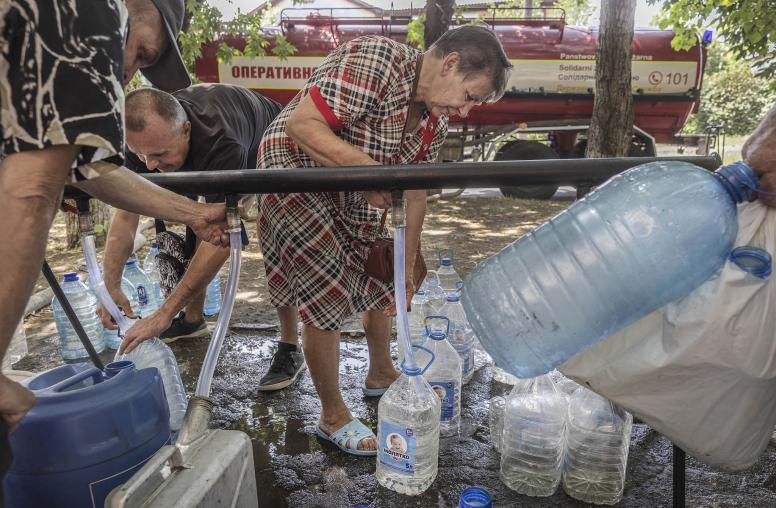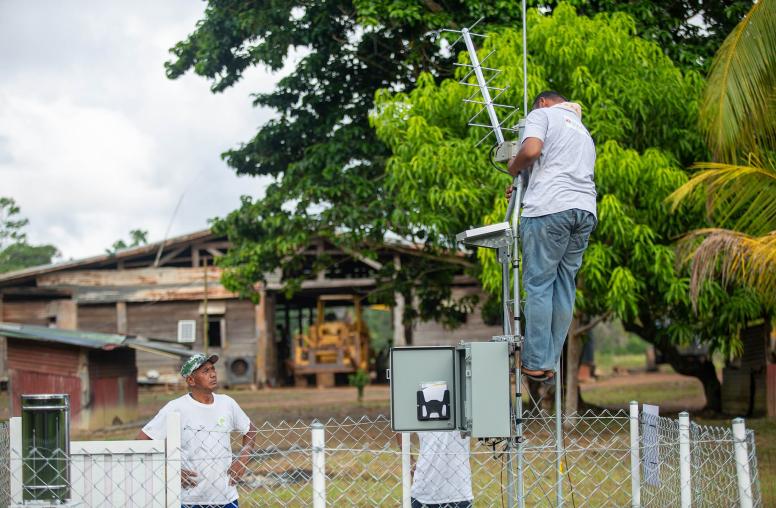In Earth’s Climate Crisis, Africa Demands a Fairer Sharing of Costs
A climate summit shows Africa needs a plan on twin crises of climate change and conflicts.
Earth’s intensifying storms, heat, droughts and floods underscore that humanity is falling behind in its race against climate change. With global powers and institutions still debating how to transform economies and share the costs of surviving a destabilizing climate, the planet’s most vulnerable continent managed partial advances this month toward a regional consensus. The first-ever Africa Climate Summit amplified demands for a robust, fairer collective response to a warming planet — but fell short of forging a unified African position. Critically, it missed a chance to outline a strategy for dealing with the combined impacts of climate and violent conflicts.

Africa’s Increasingly Harsh Climate
Africa, home to nearly 20 percent of humanity, annually emits 3 to 4 percent of Earth’s greenhouse gases. World Bank data shows that average Americans release about 13 metric tons of carbon dioxide each year, followed by Russians (11.2), Chinese (7.8), and Europeans (5.5). The average Sub-Saharan African produces 0.7 metric tons.
Yet climate change devastates Africa like no other place on Earth. A drought since 2020 in East Africa is the worst in 40 years, U.N. agencies note. In Somalia alone it killed an estimated 43,000 people last year and uprooted many of the 3.8 million Somalis now displaced. Heavy floods in 2022, many the worst in decades, inundated swaths of West Africa. Climate anomalies are intensifying tropical storms and cyclones in southern Africa. In Nigeria, Kenya, the Sahel, Central Africa, and elsewhere, these shocks and long-term climate shifts are forcing millions from their homes and escalating conflicts over scarce farmland, pasturage, potable water and other resources, inflaming violent and extremist movements and displacing more communities. This nexus of climate insecurity and conflict creates new waves of migration and increases risks to international stability and U.S. national interests.
Industrialized nations’ vast economic resources offer them far easier ways — including cheaper borrowing — to recover from climate shocks and adapt to an unforgiving climate. By contrast, the world’s financial system creates a harsher environment for African nations.
A Tale of Two Summits
As economists, civil society and Global South governments decry the disproportionate costs our changing climate imposes on developing countries, the African Union (AU) convened its first climate summit in Nairobi last week. At the sidelines, some 500 Africa-based civil society groups gathered in what they styled as the Real Africa Climate Summit, which sharply critiqued the official proceedings.
Many observers argued that the AU conference, co-sponsored by Kenya, did not break new ground. It re-emphasized that major polluters and financial institutions are failing to divest from fossil fuels. African governments decried inadequate steps by wealthy countries and multilateral banks to provide affordable financing that boosts Global South resilience to climate and humanitarian emergencies. African states pay borrowing costs five to eight times higher than wealthy countries and suffer debt crises due to high interest rates, market speculation over default risks, and unfair lending practices. Not to mention the challenge that private creditors now own a whopping 44 percent of Africa’s external debt. These excruciating borrowing costs force African states to divert thin resources away from spending on health, education, adaptation to climate change and other areas vital to good governance and stability.
The AU summit spotlighted the continent’s lack of consensus on pushing a speedy transition toward greener economies. Oil-exporting Nigeria and coal-dependent South Africa, both economic heavyweights, were among states whose chief executives skipped the conference — a reflection of arguments that Africa should be allowed to keep exploiting fossil fuels to lift populations from poverty before attempting a highly complex transition to renewable energy.
African leaders labored through negotiations on a joint declaration. Their final text urges “climate positive” investments, including expanded renewable energy generation. It presses the International Monetary Fund to offer countries special drawing rights to pay costs of the climate crisis, as it did for the COVID pandemic. Bilateral donors renewed their vows of assistance: $4.5 billion toward clean energy initiatives from the United Arab Emirates and offerings from Emirati investors for credits from the Africa Carbon Markets Initiative, an often-criticized mechanism for polluting nations to offset their emissions. Germany and the United States pledged new assistance and Kenyan President William Ruto celebrated that the conference had yielded $23 billion in such promises. Whether and how those commitments will materialize is a different conversation.
The independent conference of civil society groups issued a People’s Declaration that criticized the official summit as “captured by foreign interests” and a platform for “false solutions” to the climate crisis, such as international carbon markets. To address climate change in a globally just and responsible way, the declaration urged a radical, immediate overhaul — rather than “baby steps” — to accelerate our response to the crisis. Among the changes, it demanded a pivot away from carbon markets that have not delivered on their promises and from unproven and dangerous technologies, such as geoengineering and hydrogen fuels.
A Missing Link to Violent Conflict
Countries facing violent conflict receive only a third of the finance, per capita, of countries at peace for all of their efforts to confront climate change, according to an International Crisis Group analysis. The world’s financial systems, including private creditors and bilateral and multilateral lenders, make it nearly impossible for countries suffering violence to afford even basic steps to confront or prevent the harms of a harsher climate. Africa’s summit fell short of elevating these complex linkages and missed the mark by overlooking the conflict variable.
As expected, the summit urged “Global North” countries to fulfill their broken 2009 promise to provide $100 billion per year through 2020 to support fragile and developing states facing climate shocks — and to stand up the fund they promised last year to help such countries pay for climate-induced loss and damage. The summit seemed to reinforce the conventional notion that economic growth through “green industrialization” is Africa’s only way forward. Yet neither that approach nor other investments to help Africans tackle climate impacts can be effective unless they reach past economic elites to fulfill the unmet human needs of vast populations, notably in communities facing violent conflict.
This first Africa Climate Summit made clear that the plight of millions of people displaced by violent conflict still is not driving national policies and continent-wide agendas. Still, it showed African climate and environmental peacebuilding movements working hard for transformative change. Those movements merit support and a place at the head table — instead of being sidelined — at the next conference in 2025.
Getting to Dubai — and to Real Change
Alongside the AU summit in Nairobi, the United Nations’ climate secretariat convened policymakers with business executives, environmental activists and civil society leaders for consultations and workshops on climate-related policy challenges. These gathering were part of a broader U.N. effort to launch regional “climate weeks” to source solutions for correcting these imbalances.
The consultations aim to shape the discussion at this year’s global climate conference (called COP28), in Dubai 77 days from now. On the road to this event, countries of the Middle East and North Africa, Latin America and the Caribbean, and Asia and the Pacific will hold their own regional discussions. Each bloc needs to arrive in Dubai with clearly aligned negotiating positions. While such regional meetings between the annual conferences are not new, this year’s newly institutionalized format is encouraging. These consultations will give regions a chance to focus on their priorities and build common positions before getting on the world stage.
As Africa’s week of climate debates ended, the U.N. climate secretariat issued its first official report card on the world’s struggle to implement its overarching plan to limit planetary warming — the 2015 Paris Agreement. Humanity must slash global emissions of greenhouse gases by fully 60 percent in the next decade, the report said, if we hope to limit the rise in Earth’s average temperature to 1.5 degrees Celsius and avoid the worst calamities.
U.S. and international policymakers must proactively integrate strategies against violent conflict into our responses to climate crises. These must include decisive reforms of multilateral institutions such as the World Bank and the International Monetary Fund, as sought by last week’s Nairobi declaration. For Washington, such reforms can showcase the American approach to development, through robust partnerships, as an alternative to those of strategic competitors such as Moscow and Beijing. Truly equal partnerships with African and Global South nations are the only way the United States can be an ally to redress the historical injustices our shared climate crisis is laying bare.



